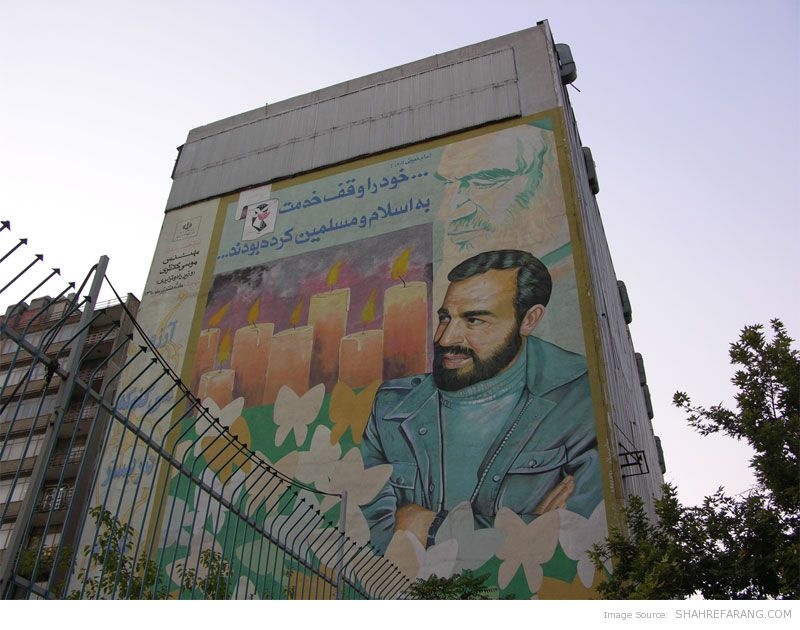All after seeing Iran's "Revolutionary" Artwork
It's almost a week all after this writer had made a writeup regarding Iran's artwork during the "Revolutuonary events" pre and post 1979, and again it had been rarely seen in western media other than describing Iran as an "International Pariah."
Usually consist of posters that utilizes Islamic iconography and Iranian symbolism, those works tend to invoke the sentiments of every Iranian against repression from both domestic and foreign interest, same as invoking their faith as a unifying factor.
And despite differences in beliefs, perhaps this writer had seen the beauty of their artworks yet rarely seen. Of course, few had interest in Revolutionary work other than Russia, China, or even Cuba with its street and pop-inspired art. Iran's very own "Revolutionary art" may had deemed radically inspired especially during its past, but in utilizing Iranian art, such as those of its symbolism and other folkish features lies the message of struggle.
Especially those of Tulips as a symbol for martyrdom. Taken from Persian myths, the tulip symbolises those who had died in every battle, hence from the once blood and corpse-strewn fields lies those flowers that corresponds to their sacrificed lives.
In fact, it had been this writer's curiosity that made him do the writeup regarding those artworks given. That usually, speaking of Iran's very own art may had meant Persian architecture and sculpture same as the well tended gardens at Iran's Safavid and Qajar-era Palaces and Mosques, but in looking at their works seems to be different especially in reflecting social reality, the use of Islam like those of depicting Ali and the martyrs of the Shiite sect, coffee-house painting as another means of invoking struggles, they had invoke the militant fact no matter some had been quite morbid or surreal such as those taken after the events of muharram or the depiction of gun or ammo-carrying women during the first Gulf War; Martyrdom? Their shiite faith and the actions taken by then Pahlavi regime, the United States, even Saddam Hussein's Iraq had created martyrs that had been featured at the walls of Tehran's buildings, and the paintings made by Kazim Chalipa and Hasan Isma’ilzadah.
This mural for instance haven't been fade and quite abit "cheesy" due to the butterflies in an image of a martyr. May look strange too as the west may ought to say that butterflies are for girls, yet also to think that those fluttering creatures also invoke same as those of tulips. In Russia would say that the use of Cranes invokes hope, so were the butterflies.
So was this artwork.
Obviously, it reflects the Islamic faith as part of the Iranian struggle. Other than the word Allah being prominent, the supplications bearing "lam" and "alif" letters had stretched vertically into banner staffs featuring banners of jewel-toned green, red, and gold waving across the black background, all reminding of the banners waved at the battle of Karbala in Iraq according to the Shiites. It also reflects the continuity of mourning as it expresses in calligraphic form.
Revisiting their artworks would say that it took months and a year to search and see another wave of Persian art that was a fusion of past and present, that invokes the antiquity of the Safavids, the anger of the majority and the reality that was then behind the grandeur usually presented in western media.
Personally, this writer, as he felt inspired from those works had made some samples partially based from the artworks given. May sound strange as he tried to replicate in a different way, the ones that invoke "every place as Karbala and day as Ashura" would say that it carries a message such as "Everyday is struggle and every place lies protest" such as this:
Partially based from the artwork "Stoning of the Devils" by Habib Sadeqi had made him drew and perhaps carry the same idea, but it reflect the social reality with a radical response: a man carrying an oil bomb, a girl carrying a lamp and another with a gun, all surrounding with "devils" that controlled both field and factory and as perpetuators surrounding incidents pointing against those who are against their policies as evidenced by a man lying in blood and a "Pieta" scene with fires.
Perhaps, made in respect and inspired by Sadeqi as it invokes struggle against the devils whom invoking repression in both body and spirit that until today, in every rotten system urges everyone who are repressed by their conditions, who had been suffered by blows or being bled dry to their near-death expectances to cast the first stone or in the drawing, the oil filled bottle, shout and oppose them as possible.
Otherwise, why settle for art for art's sake alone and joining into the flow of nonsense?





